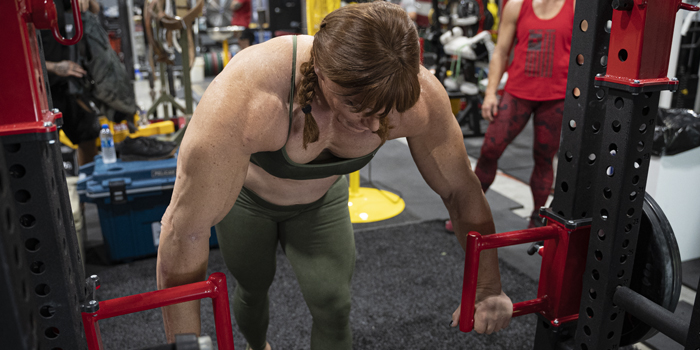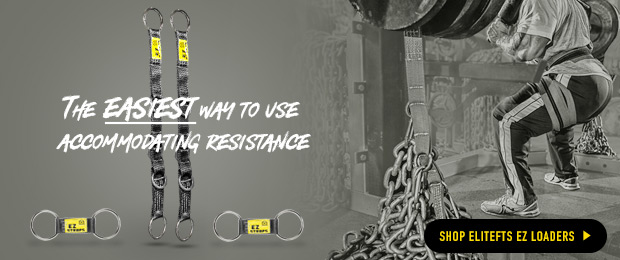
Articles like this typically focus on overrated exercises, but I prefer the opposite approach. I would much rather talk about movements I like.
Exercise selection is the ultimate dichotomy. Setting up a well-designed training routine is a battle between too much and not enough variation. The basics are best, but sometimes you need a little variety to keep things interesting.
Being bored and mindlessly going through the motions is no way to train.
How many dumbbell curls can you do before getting tired of it? Sometimes just adding in a new exercise can give you an added jolt of enjoyment to push harder during your workouts.
MORE: How to Progress Anti-Tin Man RDLs
My goal is to provide you with a nudge to include a few uncommon exercises in your program.
Remember that this is not a list of unique movements you see popular influencers doing on Instagram. You will not have to sit on machines backward, sideways, or upside down.
Also, don't feel you need to do all of them immediately. Pick a couple of movements you like, try them out, and see how it goes.
1. Chin-ups for Biceps
Many people who get into lifting weights think that bodyweight exercises are a waste of time or ineffective.
The truth is, you can build muscle and strength with just your body weight. Look no further than male gymnasts. They have arms and shoulders most bodybuilders would be proud of despite rarely using barbells, dumbbells, or machines.
When it comes to biceps exercises, it is hard to get creative. Most movements are simply curling variations. However, chin-ups offer an outside-the-box option.
Although it's predominantly a back exercise, the supinated (underhand) grip activates the biceps more than traditional pronated grip (overhand) pull-ups. Interestingly, EMG activity shows lat activation is about the same in both grips [1].
The key is making a few adjustments to the execution of the lift to make sure we can shift as much focus to the biceps as possible.
To maximize biceps involvement, keep the torso vertical and avoid leaning back. End the rep with your biceps as close to your forearms as possible. The chin should be very close to the bar at the top.
I recommend going with a medium to close grip. Also, try to keep the elbows pointing forward during the rep, avoiding the tendency to let them flair.
Feel free to adjust the resistance as needed. You can use band assistance to help you get adequate reps or throw on a weight belt to make it more challenging.
2. One-Arm Dumbbell Bench Press
The one-arm dumbbell bench press is one of my all-time favorite exercises.
As the name implies, it's a dumbbell bench press variation where you only use one dumbbell at a time instead of two. Although it doesn't seem like a big difference, it is.
The key to this exercise is tightness. If you do not start with the required full-body tension, you will go flying off the side of the bench. Everything from your toes to your upper back needs to be tight.
Where have you heard that before?
It's the same level of tension you need when bench pressing. The difference is that you can't get away with not doing it.
The one-arm dumbbell bench press has other benefits as well.
The unilateral nature of the movement will help expose or prevent strength imbalances between the right and left arms. In general, dumbbells do a pretty good job of this, but with regular dumbbell presses, there is an equal load on each side, so the unilateral demand is less. The first time you do this exercise, your obliques will be sore the next day. The offset leading requires your obliques to work hard to prevent rotation.
Last but not least, it's a self-limiting exercise meaning you can use less weight to get a similar effect. Some may think this is a negative, but the one-arm dumbbell bench press is not the main exercise. It's a great accessory movement. Anytime I can use less weight to get the same effect and save my joints a little bit, I am all for it.
This exercise can be humbling; I recommend starting light. You can do this on a flat or incline bench; I like both variations.
3. Safety Squat Yoke Bar Squats
You know you are getting old when your favorite squat variation is a Safety Squat Yoke Bar (SSB).
Outside of the powerlifting community, the SSB is highly underrated. If your gym has one, use it.
The safety component allows you to grip the bar in front of your body, taking out the issue of shoulder mobility. With the SSB, you no longer have to get into an externally rotated position, which is great for big guys or anyone who struggles to get comfortable with a straight bar.
I love the SSB as a secondary squat day. Even if you have good mobility, squatting with a straight bar multiple times per week (especially in a low bar position) can beat the shoulders up.
Additionally, the forward weight bias can help improve your technique. If you are someone who struggles to keep your chest up on regular squats, the SSB can help correct it.
The SSB is also another self-limiting exercise, so we can get more out of using less absolute load.
4. Suitcase Carry
When it comes to underrated exercises, loaded carries are always at the top of the list. They aren't flashy, and they don't get likes on social media, but they are effective.
I like the suitcase carry because it gives us a ton of bang for our buck. It will challenge the obliques, improve grip, build the traps, and it's highly functional.
All you have to do is, pick up a heavy dumbbell and hold it in one hand like you would a suitcase and walk. Walking is a key component. Once you start moving, it forces the core to stabilize the body with each step.
Don't be afraid to go heavy, but be mindful of positioning. Fight the dumbbell the entire time. Don't lose tension, and allow the dumbbell to pull you down on the working side. Doing so will defeat the purpose of the exercise and can lead to lower back pain.
I like to throw these in at the end of a lower-body training session.
5. Dumbbell Chest Supported Row
The seal row gets all the love, and for a good reason. It's a great exercise.
However, if your gym doesn't have a specific seal row bench, the setup time is a non-starter for many people. Performing the dumbbell chest-supported row is a perfect solution.
Although it's not the same, it offers many of the same benefits.
For one, the chest support makes it easy on your lower back. The barbell row is widely considered the gold standard horizontal row variation for strength and size. However, heavy barbell rows place the lower back under a ton of stress. The exercise is essentially an isometric hold for the lower back.
I have a rule when it comes to assistance exercises. If they prevent me from doing the main barbell lifts, I move on to something else. I refuse to let an assistance movement beat me up.
The dumbbell chest-supported row also makes it harder to cheat. A problem many people have with back training is maintaining strict form. The chest support takes out the ability to use momentum to get the weight up.
Chest supported rows are the primary horizontal row variation I use with myself and clients.
6. Rucking/Weighted Vest Walking
In general, I am a big fan of low-intensity cardio.
It's relatively easy to do, it won't negatively impact lifting performance, and I feel good when doing it. Plus, it helps burn a few extra calories.
With that said, I like to take things up a notch which is why I love rucking.
Rucking is just a fast walk while wearing a weighted backpack or vest. Just throw on 10-20% of your body weight and head out the door for 15-30 minutes.
When I say low-intensity cardio, I am talking about zone two cardio. Zone two is 60-75% of your max heart rate or a five or six out of 10 on the RPE scale. At this intensity, you should be able to carry on a conversation or enjoyably watch Netflix. It shouldn't be a stroll through the park (hence the added weight), but you shouldn't be gasping for air either.
The best benefit of improving general conditioning is increased recovery set to set. Anything that allows us to complete more high-quality reps is worth it.
The bottom line is this, incorporating a few rucking sessions per week will help get you in shape and perform better during your workouts. Who would not want that?
References
- Youdas JW, Amundson CL, Cicero KS, Hahn JJ, Harezlak DT, Hollman JH. Surface electromyographic activation patterns and elbow joint motion during a pull-up, chin-up, or perfect-pullup™ rotational exercise. J Strength Cond Res. 2010 Dec;24(12):3404-14. doi: 10.1519/JSC.0b013e3181f1598c. PMID: 21068680.
Kyle Hunt is an author, podcast host, trainer, powerlifter, and the founder of Hunt Fitness. Hunt Fitness is a popular online fitness coaching business that started in 2010. He lives in South Carolina with his wife, three children, and three cats.











1 Comment